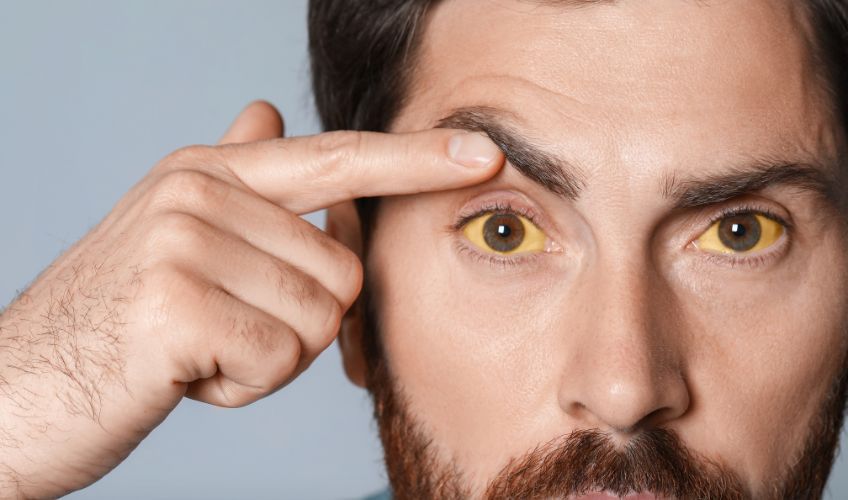High cholesterol can pose serious health risks. Individuals with a genetic predisposition to high cholesterol or heart problems should be vigilant for early symptoms.
In this article, we'll identify facial signs of high cholesterol that may indicate the need for immediate preventive steps.
Typically, yellowish-orange bumps around the eyes and on the face signal high cholesterol. Let's explore what high cholesterol is, its symptoms, and prevention methods.
{tocify}
What Is High Cholesterol? And How Does It Get High In The Blood?
High cholesterol (1) is a condition where excessive cholesterol travels in the bloodstream.
Cholesterol is a lipid that can accumulate into plaques within the arteries, thereby narrowing them and impeding blood flow to and from the heart. This can result in critical heart conditions like heart attacks or strokes.
Most of the time, high cholesterol doesn't manifest obvious symptoms until it causes complications.
How Does High Cholesterol Affect Your Skin?
However, elevated levels of fats (cholesterol and triglycerides) can occasionally result in noticeable skin changes. One of the first signs of high cholesterol may be unexpected bumps, soft yellowish skin patches, or bruises on the limbs.
Excessive cholesterol can lead to fatty deposits forming under the skin, appearing as a rash of orange or yellowish bumps filled with fat.
Cholesterol may also obstruct the small blood vessels, known as capillaries, which supply oxygen to the skin. This can cause skin discoloration and potentially lead to conditions like psoriasis.
A more severe consequence of high cholesterol is cholesterol embolism. When a fragment of cholesterol plaque breaks off and obstructs a vein or artery, it can lead to skin ulcers or other complications.
To address a cholesterol-related skin issue, identify the specific condition first. Then, treat the underlying causes, such as managing cholesterol and triglyceride levels.
What Are The Skin Symptoms Of High Cholesterol?
Skin conditions due to high cholesterol levels can vary in severity. Below are a few examples.
1. Xanthoma
Xanthomas (2) are localized fat deposits affecting the skin and tendons. Types include:
- Eruptive xanthoma: Characterized by a rash of small spots filled with fatty cholesterol deposits.
- Tuberous xanthomas: Nodules commonly found on the knuckles, knees, and elbows.
- Verrucous xanthomas: Wart-like growths that can occur inside the mouth or on the genitals.
- Planar xanthomas: Flat or slightly raised patches that can appear on any body part.
2. Xanthelasma

Xanthelasma (3) is the most common form of planar xanthoma.
A cluster of soft, yellowish elevations typically appears near the inner corners of the eyes, more often on the upper eyelid than the lower eyelid.
3. Psoriasis
Psoriasis (4) is an inflammatory skin condition, creating red, itchy patches because of the rapid skin cell renewal process. This chronic autoimmune disorder leads to an inflammatory reaction within your body. It can impact your blood vessels, elevating the chances of heart disease.
Research from 2017 indicates there is also a link between psoriasis and elevated cholesterol levels (5). Individuals with psoriasis are advised to monitor their cholesterol and triglyceride levels.
4. Cholesterol Embolism
Cholesterol embolism happens when crystals of cholesterol and other substances dislodge from plaques in large arteries and travel through the bloodstream, ultimately blocking smaller arteries or blood vessels.
When blood flow to the area is restricted, it can cause damage, leading to skin symptoms such as:
- Leg ulcers
- Skin discoloration
- Gangrene
- Blue or purple toes
- Livedo reticularis
5. Livedo Reticularis
Livedo reticularis, a netlike pattern of bluish-red mottling of the skin, generally appears on the thighs, feet, toes, buttocks, lower legs, or other extremities.
If this condition persists and parts of your skin turn dusky blue to black, contact a doctor immediately, as it could indicate a blockage requiring urgent medical care.
When To Contact A Doctor?
High cholesterol can result in several life-threatening conditions, including heart disease and stroke. It is recommended to have your cholesterol levels checked early by a healthcare professional. Early detection of such conditions allows for appropriate treatment.
Individuals at low risk for cardiovascular disease should have cholesterol tests every five years. However, those with a family history of high cholesterol and cardiovascular diseases should have more frequent tests.
Can We Lower Cholesterol?
Yes, controlling cholesterol levels is possible. If tests show you have high cholesterol, you can manage it by making lifestyle changes such as:
- Eating a heart-healthy diet
- Engaging in regular physical activity
- Quitting smoking
- Maintaining a healthy weight
Conclusion
Common signs of high cholesterol on the face include painless, skin-colored bumps on the cheeks and forehead, yellowish-orange growths, and bumps on the upper or lower eyelids.
If you notice any of these symptoms, seek medical advice immediately. Additionally, if you have a family history of high cholesterol, it is crucial to consult a doctor annually.
A doctor can run tests to diagnose high cholesterol or triglycerides and determine the best treatment plan.
You Might Also Like:
